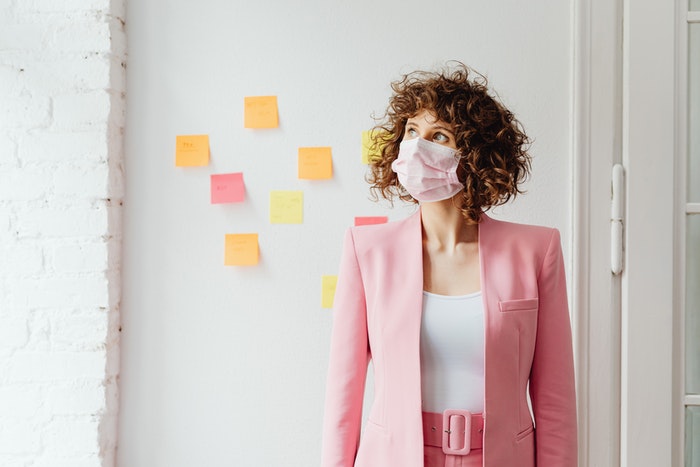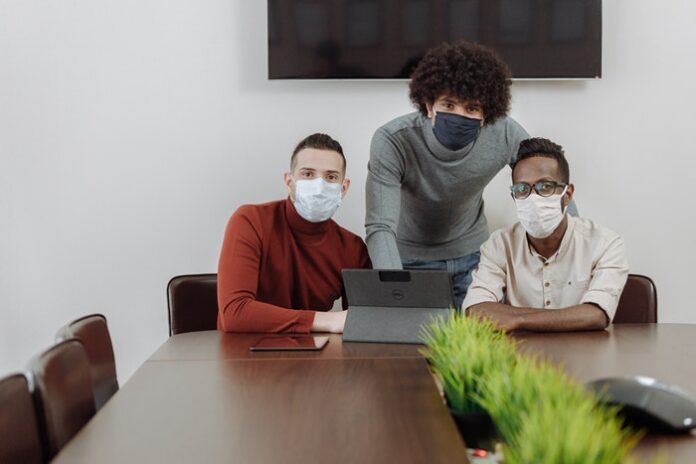Since January of 2020, the United States has seen a reported 43 million COVID-19 cases with nearly 700,000 deaths attributed to the disease. Thanks to a successful vaccine rollout and the many affordable rapid COVID test kits for sale, there’s hope that the virus will soon be under control. In the meantime, companies and organizations must still work to control the spread when hosting in-person meetings and events. In this article, we’ll go over a few simple safety tips you can use when making the switch to face-to-face meetings.
The reality is that, until individuals and organizations come together to commit to slowing the spread, we’ll likely be dealing with the pandemic for many months or even years to come. Doing everything you can to keep your workplace COVID-free is critical to your operation and the health and safety of your workforce. Failing to take proper precautions could lead to an employee shortage and could even mean liability for your company. At the same time, we all recognize the importance of doing business in the flesh. We just have to make sure we do it right. Luckily, the following safety tips are relatively simple and affordable for businesses to follow. Keep them in mind the next time you plan a company get-together or meeting.
Require Vaccines or Negative Tests
For in-person events and meetings of all sorts, consider requiring employees to get vaccinated or produce a negative COVID test. The Abbot BinaxNOW™ COVID test is a smart choice for employers who want to equip their workers for easy self-testing. This particular test comes in an option for on-site testing as well — though it must be administered by a medical professional or trained administrator, which can be a good option for organizations planning big meetings with larger on-site testing needs.
Keep the Conferencing Links (for Now)
For the foreseeable future, plan on adding conferencing links to all in-person meetings to broadcast to attendees who aren’t feeling well, who have come into contact with a positive case, or who aren’t comfortable attending in person. This will help keep the virus from spreading throughout your organization. Remember that hosting meetings for people in the office and virtually can present its own set of challenges.
Here are some ways to make your hybrid meetings work well:
- Set up a conference space with high-definition cameras and microphones so that everyone at home can hear what’s going on.
- Stay in the habit of including video- and audio-conferencing links so that everyone has a way to dial in if needed. Do this even if you plan on hosting the meeting entirely in-person, as new cases may pop up.
- Host your meetings in a quiet space with minimal background noise. Extra noise will make it tough to hear people who are calling in.
- Don’t punish employees who choose to dial in. If possible without hindering operations, keep all in-person meetings optional and always encourage workers to dial in virtually if they aren’t feeling well or have come into contact with someone with a COVID test result.
Set Up “Sanitizer Stations” Outside the Meeting Room
Setting up sanitizer stations throughout your facility, especially in public areas and outside conference rooms, can help control the spread of germs. Add a hand sanitizer station to the entryway of the conference room as well as inside the space. You’ll also want to give out hand sanitizer and sanitizing wipes to all employees, so they have access to the necessary supplies at their desk. Encourage workers to sanitize both before and after coming into contact with other team members.

Require Masks for All In-Person Gatherings
When everyone’s in a confined space and sharing ideas, germs and virus-carrying droplets can transfer from one person to another rather easily. Consider requiring all attendees to wear masks and be sure to provide disposable masks to all guests.
You may consider allowing team members to remove masks when in their own private workspaces, but make sure they’re mandatory in shared areas. You might also consider ordering branded masks with your company’s logo to help create a uniform look and strengthen brand messaging while keeping your team safe.
Follow Current Social Distancing Protocols
Packing hundreds of employees into an auditorium probably isn’t the best decision right now. Limit your in-person meeting capacities so that everyone can maintain social distancing. Currently, the Centers for Disease Control and Prevention (CDC) recommends keeping a physical distance of at least six feet between people of different households. Make sure to place chairs apart from one another and host even small meetings in bigger conference spaces so everyone has room.
Cancel In-Person Meetings in High-Case Areas
Many companies have limited or frozen all non-local travel in order to help control the spread on a broader scale. Be sure you’re paying attention to regions of the world where the virus is rising quickly. As you know, these numbers change rapidly, so always keep an eye on statistics if you’re planning on any company-sponsored travel to certain areas. If you live in a region with rising cases, don’t encourage clients or employees to travel to you until things are under control.
Pay Attention to CDC Guidelines
As we all know, the CDC guidelines have changed rapidly throughout the pandemic. While we all hope for loosened recommendations, it’s important to pay attention to the numbers and make shifts as the CDC suggests them. Following these protocols will help ensure that your employees are safe and your business isn’t liable. The above tips are also a great baseline for how to host safe in-person events for the foreseeable future.
Find a Home-Based Business to Start-Up >>> Hundreds of Business Listings.

















































